You Tube Channel: Space Lab
You Tube Channel: Space Lab
 |
| Dr. Z - MySciNet |
While working on her Ph.D. in theoretical nuclear physics at the University of Maryland at College Park, Dr. Aziza received a Mass Media Science & Engineering fellowship from the American Association for the Advancement of Science (AAAS) and was assigned to CNN’s science and technology unit in Atlanta Georgia. During her fellowship, she gained hands-on experience producing science news video segments which aired on CNN’s newscasts. This experience launched her career as a TV science producer and on-air correspondent.
An international team of scientists led by Thornton Glover of the U.S. Department of Energy’s Lawrence Berkeley National Laboratory (Berkeley Lab) used the Linac Coherent Light Source (LCLS) at the SLAC National Accelerator Laboratory to mix a pulse of superbright x-rays with a pulse of lower frequency, “optical” light from an ordinary laser. By aiming the combined pulses at a diamond sample, the team was able to measure the optical manipulation of chemical bonds in the crystal directly, on the scale of individual atoms.
The researchers report their work in the August 30, 2012 issue of the journal Nature.
Lawrence Livermore Laboratory: Synchronized Lasers Measure How Light Changes Matter
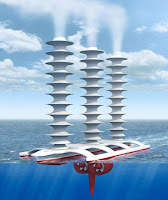 |
| Popular Mechanics |
Geoengineering aims to mitigate man-made climate change by making large-scale modifications to the Earth's surface or atmosphere. One of the main proposals discussed by scientists is stratospheric albedo modification: changing the reflective power of the atmosphere 10–50 km above the Earth's surface so that more solar radiation is reflected back into space. Such a modification would be achieved by pumping tiny particles known as aerosols into the upper atmosphere.
Physics World: Geoengineering is 'comparatively inexpensive'
(c) 2 September 2012, the Griot Poet
"We want our country back!"
The question is: back to when; to what?
Gil Scott-Heron rests in peace
Yet, his piece "B-Movie" might as well be prophesy,
Predicting a looking forward two-faced like the Roman Deity Janus: facing forward while looking back at least to last week (or, our own anus),
To a majority utopia existent only in your Amygdala fear-driven reptilian minds...
Descendants of migrants from Europe to Plymouth Rock and Ellis Island
Dependent on newer ones from Africa or Central America as servants until the PIE: performance, image and exposure, has to eventually be upturned in 2042 when you are no longer a numerical majority.
The White House, so named in 1901because it was easier than “Executive Mansion”
Became a symbol of what you’d refer to as American Exceptionalism
And like fascism, cloaked it in a flag, and carrying a cross.
So, while you’re still culturally “the boss”
You're willing to put out obfuscations and outright lies,
Whacked-out conspiracy theories on falsified birth certificates, death panels, “he’s going to take away our guns,” “secret-Muslim-in-the-church-house-Resurrection-Sunday,” etcetera’s,
Voter ID cum Diebold voter purge cum 21st century poll taxes...
In a February appearance on The Daily Show, Bruce Bartlett (former Reagan Economic Policy Advisor), said "Frankly one of our political parties is insane, and we all know which one it is.'
"They have descended from the realm of reasonableness that was the mark of conservatism…"
"They dream of anarchy, of ending government.''
Bartlett argues a new radical right in the Republican Party will oppose anything - even good conservative policy - if Democrats agree to it.
Tell me: since when did obliterating the 8th commandment constitute a "family value?"
Or, running from your own policies because your opposite tries to reach consensus constitute reason and governance? Sounds like tyranny…
You rail against gays and lesbians, yet have them prominently in your Grand Old Party, for one (no, two): George W’s reelection campaign manager and Dick (Darth Vader) Cheney’s daughter and her companion.
Hell, Rush Limp-bah had Elton John perform at his fourth “traditional marriage” from-the-previous-train-wrecks wedding ceremony with notably his beau from the UK in tow.
(And Rush: we THANK YOU for practicing good birth control/safe sex and not procreating!)
Let’s not forget: Newt-the-scoot’s blood sister,
You blithely dog whistle at the tin edges of racial insurrection, yet think yourself a big tent because you have Condi Rice and Allen West? Keep ‘EM!
And when disturbed minds take your wit as holy writ resulting in a congresswoman’s recovery from a murderous attempt, or your pundit’s caustic rhetoric causes an abortion doctor’s assassination in a house of worship, you’re quick to quip: NOT ME!
If you have an argument, voter ID cum Diebold voter purge cum 21st century poll taxes is completely unnecessary.
The electorate in a representative democracy votes rationally, not like text-in adherents to American Idol.
No wonder you ride the train of “limited government,” by which you mean:
- Education
- Police protection
- EMS and Fire Departments
Or, the very bedrock of representative government
Because your avarice Mammon billionaire gods can afford that,
(And wonders why the rest of us can’t)
Kissing butt on Scrooge McDuck is the height of idolatry (and hypocrisy)
And idiocy to the “trickle-down” fantasy
You listen to lobbyists outnumbering you five-to-one senator or congress member
And you can’t remember
Any promise you made beyond the grace of their campaign donations
To “protect and defend The Constitution from all enemies both foreign and domestic”
And have the “Audacity of Dopes”
To not see
That enemy
Is in your own
Reflection!
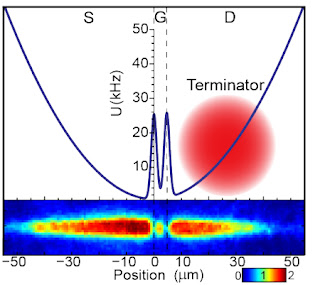 |
| Technology Review |
Now Seth Caliga and pals at the University of Colorado and National Institute for Standards and Technology in Boulder have built a version of this kind of circuit that works with atoms rather than electrons.
Their atomtronic circuit generates an oscillating atom current that emits matter waves in which atoms carry energy through space.
The heart of their device is an atomtronic transistor--an optomagnetic trap with three compartments that can hold a Bose Einstein Condensate of rubidium atoms cooled almost to absolute zero.
In an analogy with electronic transistors, Caliga and co call these compartments the source, gate and drain (with the gate sandwiched between the source and drain). The optical barrier between the compartments prevents atoms from moving freely between them.
Physics arXiv: A Matterwave Transistor Oscillator
 |
| Search the Technology blog |
Of course, numerically it has seven letters. Think of how amazed I was when I went to ScienceDebate.org after the RNC convention to see this link:
What left me rather nonplussed was the sizable representation of "D's" as well as "R's." A sample:
The rest are at the link above, with the encouragement to email respective representatives.
This silliness has gone on long enough and produced addled, attention deficit leadership! More concerned with sloganeering than science or engineering. Instead of being treated like an informed, Jeffersonian democratic republic, we're treated like the text-in voters of American Idol.
I'm wondering why knowledge is feared. Take your pick: evolution, the Big Bang, the age of the earth/universe; dinosaurs being the predecessors of modern birds. If it challenges a dogma or worldview, it must be "evil" (that is a four-letter word). Science is not. It can be used for evil, obfuscated, deliberately tampered with, but in the right hands and with the right motives, it can be a force for good, not ill. And I should expect representatives of my democratic republic to answer questions with tact not tactics; honest inquiry or admittance to lack of expertise. "I don't know" is the beginning of discovery and wisdom: tweeting during a joint session of congressis not.
I'll admit to witnessing that our collective moral compass has strayed, and modern television with all its channel options and "reality TV" is as empty as a ream of fresh printer paper, but righting it "true north" should not involve the blissful embrace of ignorance.
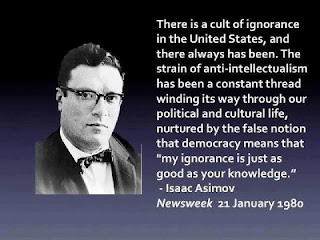 |
| USA Science and Engineering Festival - Facebook |
 |
| Astronomy and ESO |
The astronomers found molecules of glycolaldehyde — a simple form of sugar — in the gas surrounding a young binary star, with similar mass to the Sun, called IRAS 16293-2422. Glycolaldehyde has been seen in interstellar space before, but this is the first time it has been found so near to a Sun-like star, at distances comparable to the distance of Uranus from the Sun in the solar system. This discovery shows that some of the chemical compounds needed for life existed in this system at the time of planet formation.
Astronomy Mobile: Sweet result from ALMA
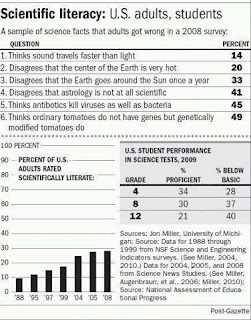 |
| USA Science and Engineering Festival - Facebook |
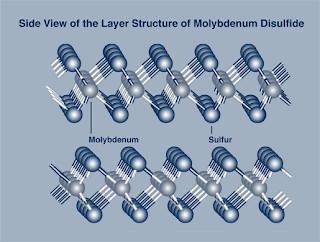 |
| International Molybdenum Association |
MIT Media Relations: One-molecule-thick material has big advantages
 |
| Purdue physicist Erica Carlson stands in front of an illustration of the fractal clusters present in copper-oxygen based superconducting material. (Purdue University photo/Mark Simons) |
Purdue University News: Superconductor 'flaws' could be key to its abilities
Related link: Mandelbrot Set Tripping
Wolfram Mathworld: Fractals
Life imitates art.
The artist:
You can also credit him for the concept of the geostationary orbit, also known as the Clarke Orbit.
Nucleus of a 6He ion is composed of two protons and four neutrons. In a singly ionized ion the nucleus is orbited by a single electron. Surplus of neutrons makes such nuclei unstable, they undergo the so-called beta-minus decays in which one of the neutrons is transformed into a proton. To preserve electric charge, an electron is emitted from the decaying nucleus. Each emitted electron is accompanied by an electron anti-neutrino. In effect, a stable 6Li nucleus (still orbited by a single electron) is produced.
R & D Magazine: Shaking the electron has strengthened quantum mechanics

For all the nerds tormented by Neanderthal, caveman jocks out there - give 'em this:
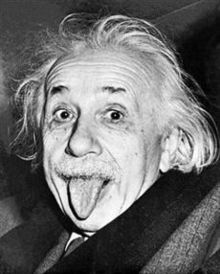 |
| Wikipedia |

Physics Central: Best Majors for GRE Scores - Still Physics and Philosophy
...it's Friday! Sing a rousing warrior song (w/sub-title translation). Qapla' (Success)!
Klingon Language Institute: Language - the Best Weapon
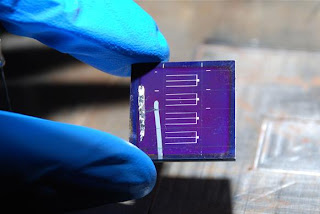 |
| Technology Review |
IBM photovoltaic scientists Teodor Todorov and David Mitzi on Friday detailed the findings of a paper that showed the highest efficiency to date for solar cells made from a combination of copper, zinc, tin, and selenium (CZTS). Published in Advanced Energy Materials, the technical paper described a CZTS solar cell able to convert 11.1 percent of solar energy to electricity.
Technology Review: IBM Breaks Efficiency Mark with Novel Solar Material
Related site: 100 Year Starship
The United States has transformed itself so rapidly from an agricultural country to an industrial country, and as an industrial country has undergone such rapid industrial revolutions that the question of who is in what class becomes an ever-wider and more complicated question. Today's member of the middle class is the son or daughter of yesterday's worker.
History is a Weapon:
The American Revolution - Pages From a Negro Worker's Notebook
Technology Review: Automate or Perish
#P4TC: Rosie Took Your Job
 |
| Source: Molecular Machines Gallery |
Please date nerds: for the ones that are single, they obviously don't get out of the lab much!
You have until Friday to find/rescue one...
Technology Review: A Playboy Model and Nanoscale Printing